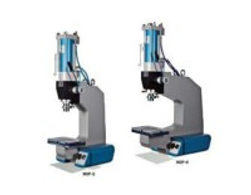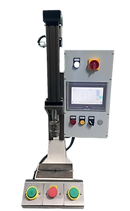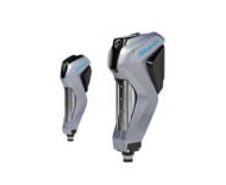- changdeliequip
- Apr 24, 2024
- 2 min read

The choice between manual hand presses and automated pressing systems in manufacturing and production environments can significantly impact efficiency, productivity, and overall operations. Both options offer unique advantages and considerations, so understanding their differences and how they align with specific needs is essential.
Understanding Manual Hand Presses:
Manual hand presses, also known as hand-operated presses, are simple yet versatile tools for various pressing applications. They typically consist of a lever or handle that is manually operated to exert force on the workpiece. Manual hand presses are suitable for small-scale production, DIY projects, and applications where precision and control are paramount.
Key Features of Manual Hand Presses:
Manual Operation: Hand presses require physical effort from the operator to apply pressure and perform pressing tasks.
Versatility: Manual hand presses can be adapted for various applications by changing dies or tooling.
Cost-Effectiveness: Manual hand press supplier made them more affordable than automated systems, which is accessible to small businesses and hobbyists.
Portability: Hand presses are often compact and portable, allowing for workspace setup and transportation flexibility.
Benefits of Manual Hand Presses:
Control: Operators directly control the pressing process, enabling precise adjustments and customization.
Flexibility: Manual hand presses can handle various materials and thicknesses for diverse applications.
Low Maintenance: With fewer moving parts, manual hand presses require minimal maintenance and upkeep.
Skill Development: Operating a manual hand press can help develop manual dexterity and craftsmanship skills.
Understanding Automated Pressing Systems:
Automated pressing systems, or hydraulic or pneumatic presses, utilize powered mechanisms to apply force and perform pressing tasks. These systems are designed for high-volume production, repetitive tasks, and applications where speed and consistency are critical.
Key Features of Automated Pressing Systems:
Powered Operation: Automated pressing systems utilize hydraulic, pneumatic, or electric power to apply force, eliminating the need for manual exertion.
Programmable Controls: Automated systems often feature programmable controls for precise force, speed, and cycle adjustments.
High Throughput: Automated pressing systems can achieve higher production rates and throughput than manual hand presses.
Integration Capabilities: Automated systems can be integrated into production lines and controlled remotely for seamless operation.
Benefits of Automated Pressing Systems:
Efficiency: Automated pressing systems can perform tasks quickly and consistently, maximizing productivity and reducing labor costs.
Precision: Programmable controls allow for precise force and speed adjustments, ensuring uniformity in pressed products.
Safety: Automated systems minimize the risk of operator injury associated with manual exertion, repetitive motions, and heavy lifting.
Scalability: Automated pressing systems can be scaled up or down to accommodate changing production demands and volumes.
Comparing Manual Hand Presses vs. Automated Pressing Systems:
Cost: Manual hand presses are generally more affordable upfront, while automated systems require a higher initial investment but may offer long-term cost savings through increased productivity.
Production Volume: Manual hand presses are suitable for low—to medium-volume production, while automated systems excel in high-volume production environments.
Precision and Consistency: Automated pressing systems offer greater accuracy and consistency than manual hand presses, making them ideal for applications requiring tight tolerances.
Flexibility: Manual hand presses offer more flexibility in setup and customization, while automated systems are optimized for specific tasks and may require more extensive setup and programming.
Conclusion:
Both manual hand presses and automated pressing systems have their place in manufacturing and production environments, offering unique features, benefits, and considerations. Whether you prioritize flexibility, precision, or efficiency, a pressing solution is available to suit your production goals.



